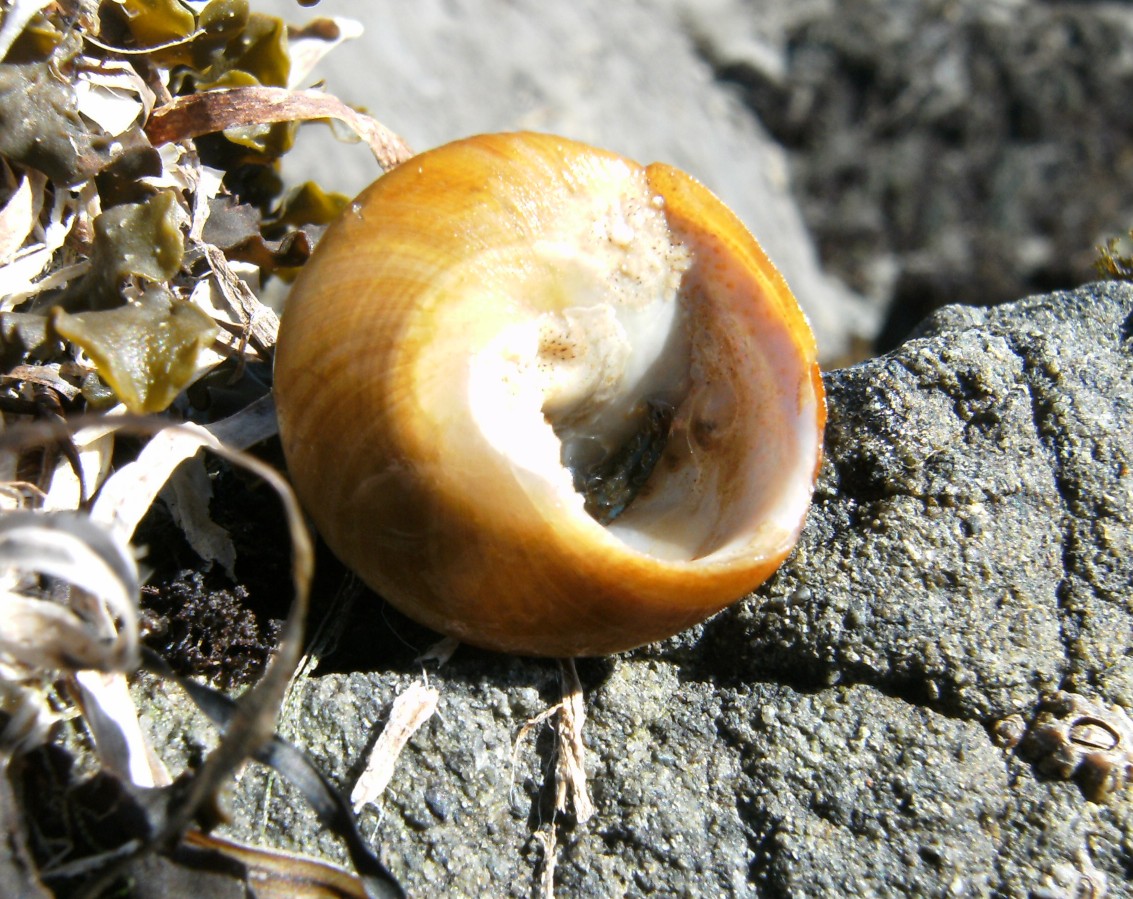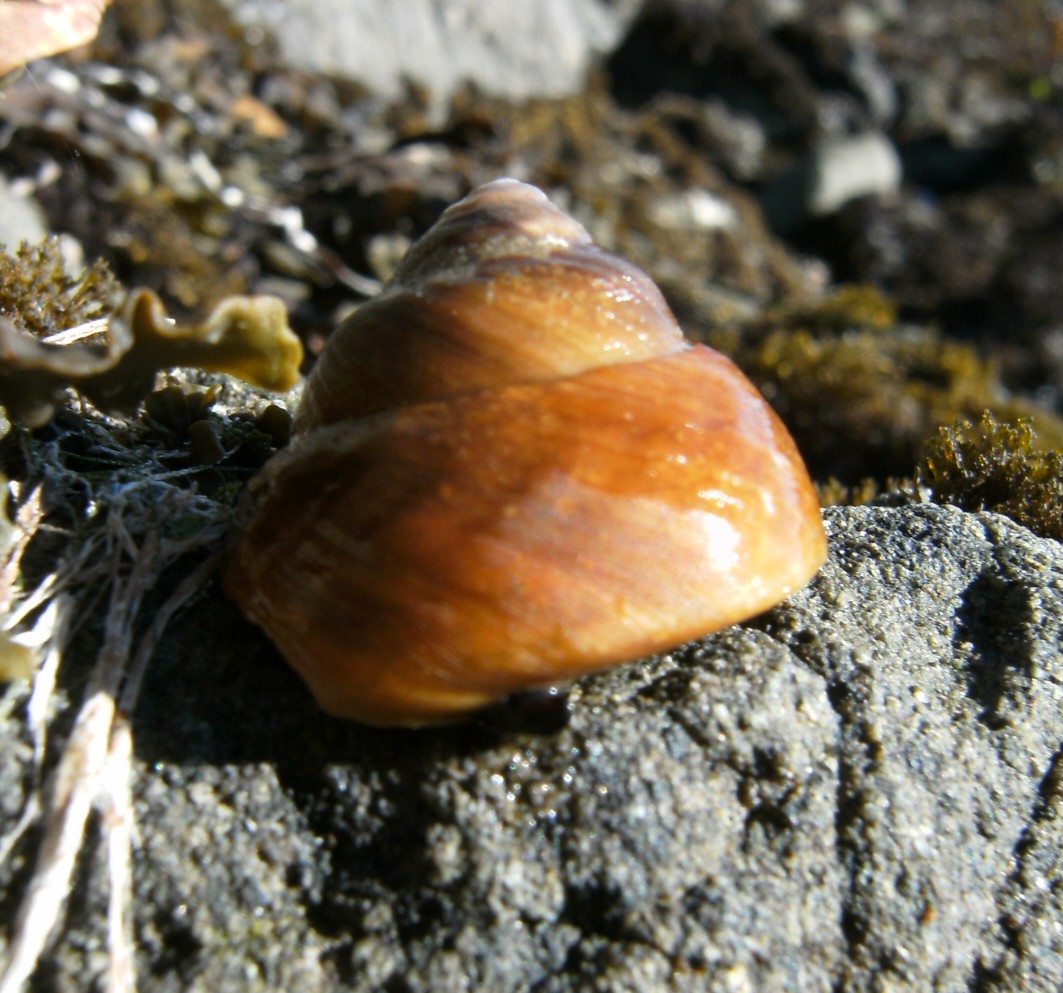Description: As with other members of family Trochidae (top shells), the shells have a raised spire, the aperture has no siphonal notch or canal, the interior of the shell is pearly, and it has a thin, horny operculum with spiral lines. This species has a height less than twice the diameter, the columella has one node, the umbilicus is closed or nearly so by a callus, and the shell is covered with a brown or orange periostracum; white at the aperture. Although the umbilicus is closed, it is marked by a pitlike depression in the callus. The foot is dark brown or black on the sides and white or cream underneath. Height to about 3 cm.
How to Distinguish from Similar Species: Chlorostoma funebralis, the black turban, has a black periostracum that is usually worn near the apex, a scaly bend below the sutures, and two nodes on the columella. Promartynia pulligo and Chlorostoma montereyi have a brown periostracum but an open umbilicus.
Geographical Range: Cape Arago, OR CA to Mexico
Depth Range: Low intertidal to subtidal
Habitat: Mostly subtidal. Frequently found on low intertidal reef flats with plenty of algae. Also on upper blades and stipes of offshore kelp beds.
Biology/Natural History: This species feeds on algae. They have softer teeth than do littorinids so they probably eat more soft algae and less coralline algae than do the littorinids. In the lab they readily eat large brown kelps. Oregon populations spawned in August. The eggs are bright green.
If this species is dislodged and lands on a soft bottom it may pick up pieces of gravel and move them around the foot until the weight counterbalances them and helps them to turn upright.
The main nitrogenous excretory product is uric acid, which is unusual for a marine species.
The
shells are favorites of hermit crabs. Hooked slipper shells Crepidula adunca
may be found
living on the shell, as may juveniles of the limpets Lottiaa digitalis,
Lottiaa pelta, and Lottiaa paradigitalis. Lottia asmi can be
found as juveniles and adults, which feed on algae on the host's shell.
Predators include Pisaster
ochraceous and sea otters. May be parasitized by
the ciliated protozoan Enerthecoma
tegularum. Found as Pliocene fossils at San
Diego.
| Return to: | |||
| Main Page | Alphabetic Index | Systematic Index | Glossary |
References:
Dichotomous Keys:Carlton, 2007
Kozloff, 1987, 1996 (as T. brunnea)
General References:
Abbott, 1986
Brusca and Brusca, 1978
Johnson and Snook, 1955 (as T. brunnea)
Morris, 1966
Morris et al., 1980 (as T.
brunnea)
Niesen, 1994
Rice, 1971
Ricketts et al., 1985 (as T. brunnea)
Scientific Articles:
Kozloff, E.N, 1946. Studies on the ciliates of the family
Ancistrocomidae Chatton and Lwoff (Order Holotricha, suborder
Thigmotricha). II. Hypocomina tegularum
sp. nov. and Crebricoma
gen. nov. Biological Bulletin 90: 1-7
Web sites:
General Notes and
Observations: Locations,
abundances, unusual behaviors:

The view of the underside shows the umbilicus which is closed but marked by a depression, plus the white aperture. This shell is inhabited by a hermit crab and has a few fragments of bryozoans living on it. Photo by Dave Cowles, August 2010.
Authors and Editors of Page:
Dave Cowles (2010): Created original page
CSS coding for page developed by Jonathan Cowles (2007)
Rosario Invertebrates web site provided courtesy of Walla Walla University
